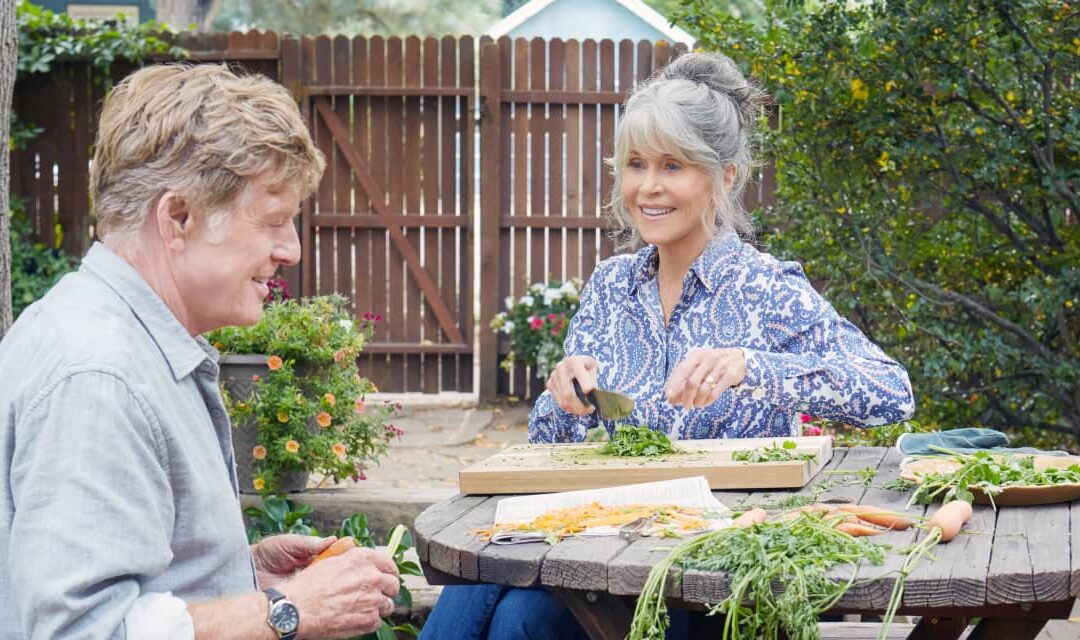In recent years, filmmakers are increasingly intent on portraying diverse characters with dignity and respect. The goal is showing people as they really are, free from stereotypes.
Yet older people in movies sometimes seem frozen in time as doddering comic foils, endearing eccentrics, tactless truth-tellers or all-knowing keepers of wisdom.
Seniors who watch their peers on screen may think, “I know no one like this.”
Unlike documentaries, movies aren’t supposed to capture stark reality. Characters of all ages play a role in advancing the story.
Ailing seniors may serve a purpose—to deliver advice before dying to the young star or lurk in the background at family dinners. Vibrant seniors, by contrast, can reinforce a filmmaker’s message that you’re never too old to drink in life.
It’s heartening when movies portray older people with verisimilitude. When we see seniors as they really are, it raises awareness and reduces ageism.
“I think things have improved a lot in how movies show older adults,” said Gayle Doll, Ph.D., an associate professor of gerontology at Kansas State University. “The serious dramas have done a pretty good job for the most part. But if it’s a comedy, it’ll often stereotype older adults.”
Doll’s research focuses on sexual expression and aging. She has recruited groups of seniors to watch movies that involve older characters in intimate relationships.
In comedies, sex among seniors often becomes “laughable,” she says. It’s not meant to ring true.
When watching dramatic films, Doll says older viewers were more apt to conclude that older characters seemed at least somewhat representative of them. Even then, some portrayals strained credulity.
In “Our Souls at Night” (2017), stars Jane Fonda and Robert Redford were nearly 80. But they looked too good for their age, undermining the film’s believability.
Doll cites two films as delivering bracingly real portraits of older people in all their complexity. “Cloud 9” (2008), by German director Andreas Dresen, captures the romantic lives of seniors with searing intimacy.
“The [female lead character] is aged 60 to 70 and 30 to 40 pounds overweight,” Doll said. “The characters have very normal bodies. When you watch it, you think, ‘This is what life is like when you’re older.’”
She also credits “The Wife” (2017) for its finely observed character study of an older married couple grappling with long-suppressed emotions. The dynamic between the two stars—Glenn Close and Jonathan Pryce—hews closely to how actual people of that age with a fraught personal history might relate to each other.
“In private moments between them, they don’t lean into each other,” Doll said. “There’s a lack of intimacy. It makes the tension apparent. They’re disconnected” in ways that are recognizable to aging couples that drift apart and harbor deep-seated resentments.
As we age, regret tends to take hold. We rue lost opportunities, berate ourselves for poor decisions and lament how we treated others.
“The Last Movie Star” (2017) conveys this all-too-familiar sense of regret through the eyes of Burt Reynolds. In one of his last films before his 2018 death, Reynolds comes to terms with a life not entirely well lived.
With more than 55 million people in the world with dementia, you’d think movies would show the disease realistically. But that’s rarely the case.
Typically, we see old people in their demented state for most of the movie. But they experience well-timed bursts of lucidity to utter profundities, comfort a younger protagonist or provide clues to unlock a mystery.
Yet in a handful of films such as “What They Had” (2018) and “Away From Her” (2006), dementia serves as more than a plot device. In these excellent movies, we come to appreciate the disease’s impact not only on the individual but also on their caregivers, family members and friends.









